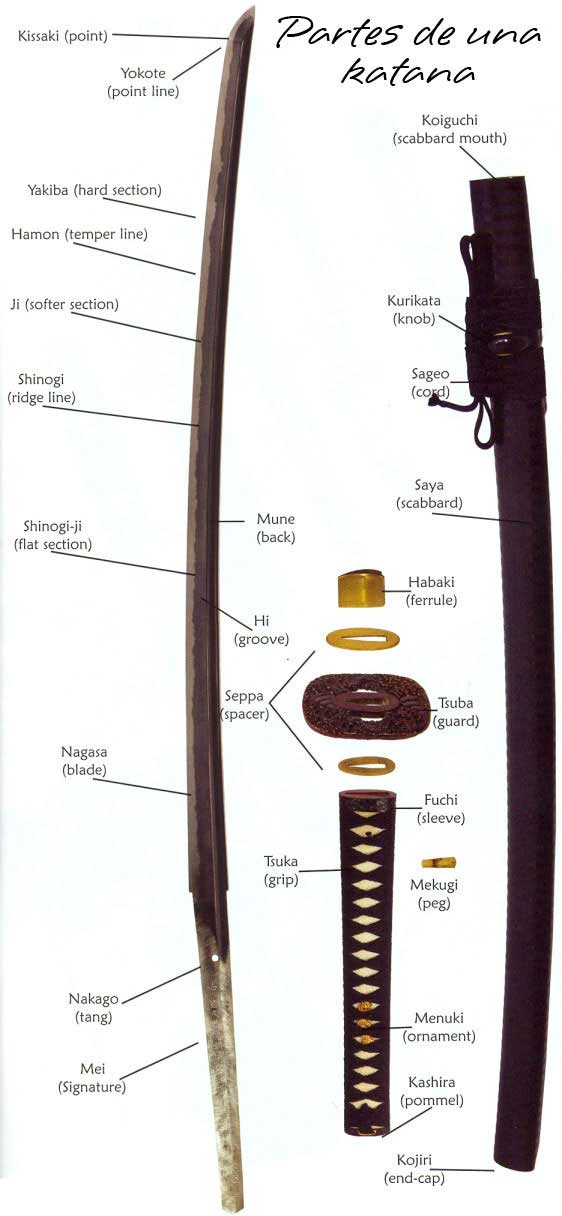What is Shinogi-Ji?
The Shinogi-Ji is one of the most important parts of the blade of the katana, the emblematic Japanese sword that has fascinated generations for its art, history, and functionality. It is specifically located between the Shinogi and the Mune, playing a crucial role in both the structure and aesthetics of this prestigious weapon.
Aesthetically, the Shinogi-Ji can showcase a variety of designs and textures, which vary according to the type of katana and the purpose for which it was made. As it is an element that not only serves a function but also reflects the culture and lineage of its owner, master smiths often incorporate images, patterns, and intricate engravings into this part of the blade. In this way, each katana becomes a unique work of art.
Functionally, the Shinogi-Ji is vital. Unlike the thicker and stiffer Shinogi and Mune, the Shinogi-Ji has a smaller thickness and greater flexibility, making it less susceptible to breaking during use in combat or training. This property is essential for the durability and effectiveness of the katana, as a robust but overly rigid blade may be prone to failure in critical situations.
To extend the lifespan and effectiveness of the katana, it is crucial to perform proper care for the Shinogi-Ji. This involves keeping it clean and regularly lubricated, thus preventing oxidation and corrosion, which can be harmful. Additionally, the blade should be protected from blows or impacts that could cause damage, as any imperfection can compromise its performance and, therefore, the safety of the user.

Thus, the Shinogi-Ji not only reinforces the integrity of the katana but also acts as a cultural window into the history and art of making these iconic swords. This makes the knowledge and care of all its components, including the Shinogi-Ji, fundamental for any enthusiast of katanas and samurai culture.
















